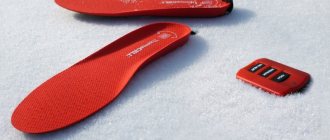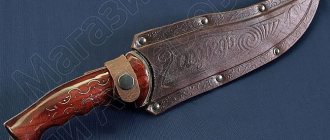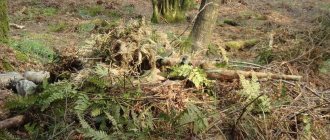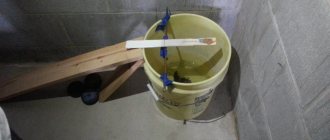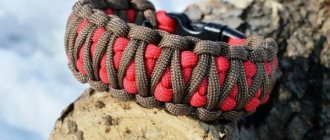Making snowshoes from polypropylene pipes with your own hands is perhaps the easiest way, at least this is the most common manufacturing pattern. However, they have been done for centuries, and have influenced several variations that are applicable in practice at the present time. Snowshoes are relevant for residents of northern countries, especially those living in snowy regions of the Arctic. The technology for making snowshoes has not undergone fundamental changes during this time; the same methods are now used. Is it that modern materials are now more often used, more durable and convenient in the process of work, and technologically advanced tools that were unavailable just some 50-70 years ago.
How to make snowshoes yourself at home
Snowshoe making was practiced by indigenous peoples living in the circumpolar region from Canada to Eastern Siberia. These simple devices were intended for movement through deep and muddy snow cover, mainly during hunting. Snowshoes have not lost their relevance even now, being used by hunters and rangers for walking through snowy forests. They are used less often by people in extreme conditions, in most such cases, saving their lives. Having certain knowledge borrowed from primitive hunters, the simplest snowshoes can be built independently from available materials - branches and tree bark, in just a few minutes. At home, having the necessary materials and tools on hand, making durable snow walking equipment is even easier.
What is important about this is for what purposes and under what conditions homemade snowshoes will be used. During manufacturing, climatic conditions and terrain features must be taken into account; the shape of the structure and the types of materials for the model depend on this.
Characteristics of some options for homemade snowshoes
Regardless of the purpose and model of snowshoes, they all artificially increase the size of the human foot. Due to this, a person’s weight is distributed over a larger area, thereby reducing the pressure in ordinary shoes, which is concentrated at one point, preventing you from falling into the deepest snowdrifts. From the outside, snowshoes seem bulky and uncomfortable, but if the established design parameters are observed, you can not only walk in them, but also run. For convenient movement across snowy expanses, you should follow simple rules in their manufacture:
- Such devices must be durable and reliable in order to withstand a long transition. If they fall apart in an open area where there are no trees—available materials for repair—such a turn could cause death.
- They should not be too heavy (the maximum permissible weight is 1 kg for one snowshoe). Exceeding the weight of the structure will make it impossible to move - they will sink deeply into the snow, and their legs will quickly get tired when walking.
- Snowshoes should not exceed the size; too wide and long ones will only interfere with walking, causing you to fall. Ideally, the dimensions of the devices are calculated individually, taking into account body weight. The standard size is 25-30 cm wide and 50-80 cm long.
Manufacturing stages
The material needs to be given an oval shape. The width and height are calculated individually for the foot of the person who will wear this device. It is necessary to prepare bars specifically for the crossbars, water-repellent impregnation to treat the wood to protect it from swelling and cracking.
We give the beam the desired shape, but do not fasten the ends separately from the frames. Holes are made in the bars in advance to fit the size of the twine or other selected material that you will be stretching. There should be approximately 20-22 similar holes. The next step is to form a mesh from twine. It is made by pulling elements through ready-made holes crosswise. The finished mesh should be covered with any dense fabric. For fastening it is necessary to use belts, the width of which is selected so that the foot can easily fit in the shoe. The straps are firmly fixed in the middle of the base.
It will be more difficult to make a plastic structure, so you will need more detailed instructions:
- To make snowshoes from more modern high-quality materials, you can, for example, use polypropylene pipes as a basis. Their diameter should be 20 mm. This design ensures the strength and reliability of the product. From these pipes you need to prepare four blanks 65 cm long, eight blanks 23 cm long. Additionally, you will need four fragments of a metal-plastic pipe (50 cm long). The edges of the pipes will need to be slightly rounded.
- The next step is to heat the ends of 6 tubes with a special gas burner and insert them into adapters (also called tees). If such a device is not at hand, heat it over a gas stove. The output should be tubes 23 cm long and adapters at the ends.
- In the same way, the ends of metal-plastic tubes (4 of them) and the remaining polypropylene tubes are heated. Now you can start assembling the frame. Each includes three components. One end of the frame is fixed with so-called barrels. Metal-plastic tubes are bent and fastened to the resulting frame with self-tapping screws to form the nose of a snowshoe (part of a hoop).
- Next, the holes necessary to stretch the mesh onto the frame frame are made. The cord is pulled in the form of diamonds.
- We prepare a base for fastening from plywood (size 30x15 cm), then install the fastening itself.
- The final stage is to securely fix the frame base to the plastic frame. The resulting homemade snowshoes can support the weight of a person with dimensions of about 75 kg.
Common snowshoe models
Among homemade snowshoes, there are 4 most common models that are used in different situations and for predetermined conditions and purposes. The design of such devices is somewhat different, since their application involves their use in radically different natural terrain features. To create snowshoes with different purposes, for certain climatic and landscape zones, materials of different nature will be required.
Types of devices for moving on snow and the scope of their domestic use:
- With a wooden frame, called “Bear Paw”, they are used for walking or hunting in a snowy forest, where movement on them is most convenient. This is achieved by the springy properties of the structure, thanks to which you can walk quickly in them, and, if necessary, even run and jump.
- Plastic pipes are considered a universal option, used for quickly moving both through the forest and across rough, open terrain. One of their main materials is ropes, which add greater stability to the structure, and therefore are most often used for walking on crust.
- Made from plywood, they are most often used by climbers, skiers and snowboarders to climb snowy slopes, for which they are most suitable. This is due to the solid frame structure, which provides additional emphasis on the heel; for even greater convenience and to avoid arbitrary sliding, they are equipped with teeth.
- The classic version has a wide range of applications; you can equally comfortably wander through the forest, move along hilly terrain, or climb a not too steep slope. Actually, it was the design of the classic snowshoes that became the prototype of the three previous ones, containing all their positive features in one.
How to make snowshoes with a wooden frame
Making snowshoes designed for hunting with your own hands is not that difficult. For the frame, it is better to use ash, harvested in late autumn or winter, when there is no sap in the wood. The snowshoe production process is as follows:
- the trunk is medium in thickness, splits into 4 equal longitudinal parts;
- planed with a scraper to obtain workpieces with a cross-section of 40x40 mm;
- finished materials are placed in a steaming chamber for 3-4 hours;
- after, the blanks are bent, giving a teardrop shape, and kept for 7 days;
- after a week, the edges are split and spliced using epoxy glue;
- before it hardens, the splice area is tightly tied with fiberglass tape;
- for additional strength, crossbars are inserted into the frame;
- the structure is coated with polyurethane varnish and left to dry for 24 hours;
- a day later, the wooden hoop is braided with a nylon cord in the form of a mesh;
- in places with the greatest load, a tie is made from a steel cable;
- at the final stage, they make fastenings for the foot so that the butt stays longer.
How to make snowshoes from plastic pipes
To make such devices for walking on slushy snow, you will need 2 polypropylene pipes (PVC) 1.5 m long and at least 30 mm in diameter, 10 m of nylon cord, up to 6 mm thick and 2 elastic bands for fastenings. The following is the process of creating snowshoes by assembling the structure:
- plastic tubes are cut into 6 unequal parts - 2 x 1.1 m, 4 x 20 cm;
- the long ones are heated in the center and bent so that the ends touch each other;
- for 30 min. immersed in cold water to cool and give a finished shape;
- the surface of the frame is treated with sandpaper until the coating is completely removed;
- at the point of loading, 2 short tubes are inserted and fixed at a distance of 15 cm;
- the ends are tied together with a cord, and the rest of the structure is intertwined in the form of a mesh;
- Elastic bands are attached to the short transverse inserts to secure the legs.
How to make snowshoes from plywood
To make a plywood version, you don’t have to spend a lot of time and effort; this is the simplest and least expensive production. For production you only need: a sheet of plywood No. 10, a 0.8 m long board, screws and a cord for fastenings, and also a standard set of tools for working with wood. After this, you can proceed directly to making snowshoes:
- using a jigsaw, cut out a rectangular base 20x50 cm in size;
- for convenience when walking, the edges of the workpiece should be rounded;
- the board is sawn into 4 parts of 20 cm each;
- they strengthen the lower part in the place where the foot will be fixed;
- in the same place, holes for fastenings are drilled using a drill;
- cords are passed through them, fastened with screws from below;
- Finally, the holes with the threaded cords are filled with glue.
How to make classic snowshoes
As with the previous ones, classic snowshoes do not require too much time to make. You can make them using simple, available materials:
- take a wooden beam, 100-110 cm long, 7-8 mm thick, 30-40 mm wide;
- bends in the center so that the ends are connected and the frame takes on a teardrop shape;
- to strengthen the structure, 2 crossbars are installed 10 cm from the toe and heel;
- in the workpieces, 10-12 holes are drilled on each side with a drill;
- a rope is passed through them and intertwined in the form of a mesh, but without knots;
- All that remains is to attach the bindings and the snowshoe is ready to hike through the snow.
Attention should always be paid to the wooden part of the structure - it swells from moisture, and when it dries, it becomes covered with cracks. To avoid destruction of wood at the most inopportune moment, it requires care and impregnation with special oils or drying oil.
Making snowshoes from plastic pipes
At the first stage, it is necessary to choose the right place for work. When connecting plastic pipes, the air in the room is saturated with harmful components. Their volume is relatively small, but in order to avoid deterioration of health, it is recommended to ensure good ventilation while maintaining normal room temperature.
The dimensions of snowshoes depend on the mass of the hunter - the larger it is, the higher the area of the structure. The shape can be chosen traditionally, based on a suitable factory model. According to its parameters, a drawing of the future design is drawn up.
Frame making
First, the pipe is cut into blanks. A standard snowshoe will consist of a front section and two sides. To reduce the resistance of the snow and create the effect of sliding along it, the frontal area should repeat the shape of a regular ski - an upward tilt of 15-20°.
The procedure for making the frame:
- Cutting blanks.
- To form the curved front, a length of pipe is placed in hot water and then deformed. For this, it is best to use a flexible metal rod.
- Connecting elements using a soldering iron.
- Checking the frame for strength and rigidity.
This stage of work is completed.
How to choose a good and inexpensive tourist gas burner - an overview of all parameters
Final stage
Tying knots is necessary to evenly distribute the hunter's weight over the entire surface of the snowshoe. The closer the ropes are to each other, the more stable the structure. To prevent the sliding effect, the surface of the pipes can be treated with sandpaper to obtain roughness.
You can make a base for shoes yourself or buy a ready-made element from skis. It is attached to the snowshoe partitions using a rope. If there is a possibility of walking on ice during a hunt, you can make a removable base. These may be metal plates with small notches. They are secured using rubber bands.
The advantage of DIY snowshoes for hunting made from plastic pipes is the variability of production. Instead of welding, structural elements can be connected to each other in the traditional way - using a rope. But this will reduce their mechanical strength.
Alexander
Hello, I'm Alexander, the mastermind behind the blog. In terms of career and free time, I connected my life with the forest. How could it be otherwise when you live in Karelia! In this blog, I am responsible for sections dedicated to hunting, hiking and equipment. Welcome to my world!
Dressing and snowshoeing techniques
Regardless of the model of snowshoes, when putting them on, they are all the same: the heel is placed first in the place where the fulcrum will be fixed, and the overlapping fastenings are tightly tightened on the ankle. The comfort of the leg and the entire movement depends on the reliability of fastening the device. The tightening should be tight, but not too tight on the leg, disrupting blood circulation.
Before covering significant distances, you need to get used to new snowshoes, and only after that master the technique of walking in them, which looks like this:
- The foot is placed on the entire foot, without rolling from heel to toe, so as not to “plow” the snow on the backs, this will slow down the pace of movement and add pointless load. A step with a roll is relevant if the snow cover is too dense or has an ice crust.
- When walking, your feet should be placed as wide as possible, given the dimensions of the snowshoes; a normal step will not work. So, the left toe will constantly hit the right foot, and vice versa. In addition, each of the snowshoes will step on the other, which threatens to fall.
- During ascents, you should not step on your heel, but, on the contrary, put all the emphasis on your toe, driving it as deep as possible into the snow. This technique allows you to create unique steps, which guarantees greater stability for your feet when walking.
- But when descending, the entire body weight is transferred to the heel and back of the snowshoe, this reduces the risk of arbitrary slipping and subsequent falling, which in such a situation is extremely traumatic.
Having chosen a model and knowing how to make snowshoes with your own hands, the process of making them will not seem so difficult, even without the proper experience. Yes, it is not important, the main thing is to adhere to the recommended dimensions established for such products.


